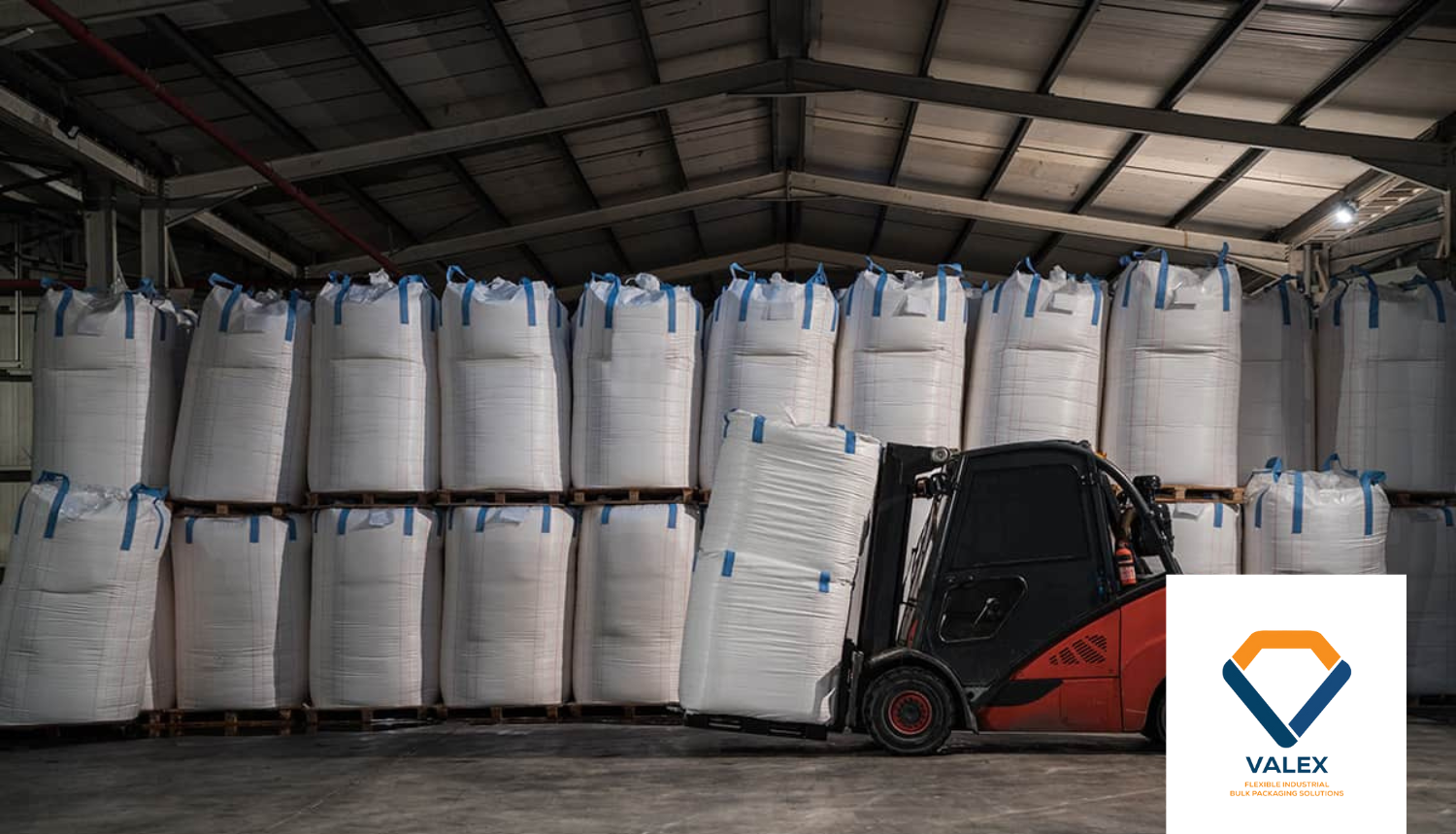Efficient and safe handling of bulk bag storage and transport is essential for businesses dealing with large quantities of materials. Whether you're using builders bags for construction materials or need a secure bulk packaging solution for industrial products, following proper handling and storage techniques is crucial.
This guide provides best practices for loading, unloading, and storing bulk bag products to prevent damage, reduce workplace hazards, and improve efficiency.
Understanding Bulk Bags and Their Safety Features
What Is a Bulk Bag?
A bulk bag (Flexible Intermediate Bulk Container) is a large, flexible container designed to store and transport dry materials such as sand, cement, grain, and chemicals. These bags are lightweight, strong, and capable of carrying loads between 500 kg to 2000 kg, making them ideal for various industries.

Key Safety Features of Bulk Bags
- High load-bearing capacity – Built for handling bulk materials efficiently.
- Different lifting options – Single-loop, multi-loop, and cross-corner loops for secure lifting.
- Variety of types – Includes builders bags, food-grade bags, and conductive bags for different applications.
Best Practices for Handling Bulk Bags
Loading and Unloading Safely
- Always use a forklift, crane, or hoist to lift a bulk bag.
- Ensure even weight distribution when filling bags to maintain balance.
- Avoid sudden movements while handling to prevent material spills.
Proper Lifting Techniques
- Never lift builders bags by a single loop; always use all lifting loops provided.
- Use spreader bars when handling large or heavy bulk bag loads.
- Ensure the lifting mechanism is rated for the weight of the bag to prevent accidents.
Preventing Workplace Hazards
- Keep the workspace clear of obstructions when moving bulk packaging materials.
- Train employees on proper lifting and stacking techniques.
- Regularly inspect bulk bag seams and loops for signs of wear or damage.
Best Practices for Storing Bulk Bags
Proper Stacking Techniques
- Follow recommended stacking heights based on bag type.
- Store builders bags on stable pallets to prevent tipping over.
- Use racks or shelving for additional support when stacking multiple bulk packaging units.
Storage Conditions and Environment
- Keep bulk bag storage areas dry to prevent moisture damage.
- Avoid exposure to direct sunlight, which can weaken bag material over time.
- Ensure proper ventilation in warehouses to maintain the integrity of bulk packaging materials.
Maintaining Bag Integrity Over Time
- Inspect builders bags for tears or weak seams before reuse.
- Rotate stock regularly to avoid excessive stress on older bags.
- Follow proper disposal and recycling protocols for used bulk bag materials.
Common Mistakes to Avoid in Bulk Bag Handling & Storage
- Overloading bags beyond their Safe Working Load (SWL) limits.
- Dragging bags instead of properly lifting them with machinery.
- Stacking bulk packaging materials unevenly, leading to potential collapses.
Conclusion
Handling and storing a bulk bag correctly is essential for workplace safety and efficiency. Whether using builders bags for heavy-duty applications or bulk packaging solutions for industrial transport, following best practices ensures product protection and prevents workplace accidents.
At Valex Ventures, we provide high-quality bulk packaging solutions designed for durability, efficiency, and safety. Contact us today to find the right bulk bag solutions for your business needs!